
Join Amazon Prime - Watch Thousands of Movies & TV Shows Anytime - Start Free Trial Now
The P-38: Is Size And Shape
A Disadvantage?

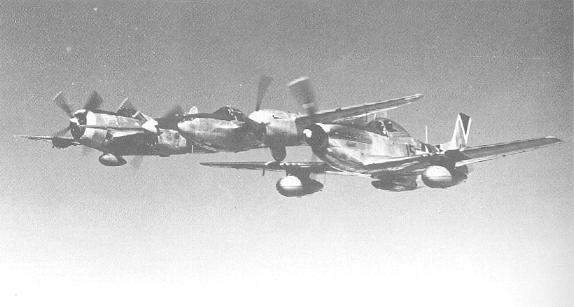
Therefore, survival depends a great deal on a pilot's situational awareness. In simple terms, to be aware of what is going on around one's aircraft. To have your head "in the cockpit" is to invite disaster. One must have their head on permanent swivel.
But let us assume that every pilot in the air at any given time is fully alert. Let's also assume that they all have 20/20 vision. What differences remain are outside vision as determined by the aircraft's design, the size and shape of the enemy aircraft and how well that aircraft blends in with the background.
The aircraft providing the best view out are the ones with bubble type canopies such as the P-51D, Fw-190 and the Yak-3 to name only a few. There were some fighters that had very poor outward vision because the canopy was heavily framed, or small. Those canopies that were faired into the fuselage, generally provided for the worst outward vision. Fighters such as the Bf-109 and the Hawker Hurricane come to mind as having less than satisfactory canopy designs. The P-38 Lightning, while having a very large glass area suffered from having two engines and a large wing to obscure vision below on either side.
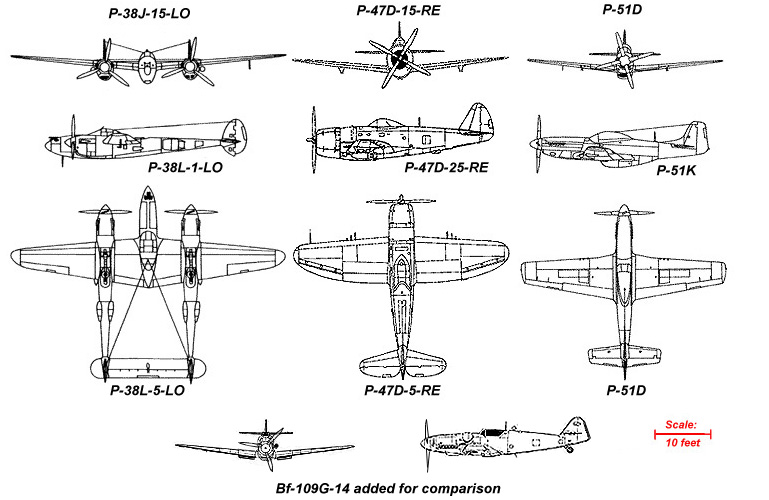
Perhaps, the next greatest factor was the size and shape of the fighter itself.
Some fighters, such as the Bf-109 were quite small, and very difficult to spot
at a distance. Other fighters such as the P-47, was remarkably large for single
engine aircraft, and hence, were easier to detect at longer ranges.
A large and/or distinctive shape certainly presented some handicaps. Yet, they could also provide a few advantages as well.
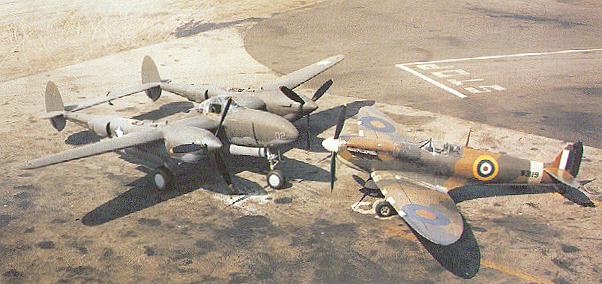
First the handicaps: Distinctive shapes, such as the P-38's twin boom, twin engine design, is easily identified , especially from above or below. A large round fuselage, like that of the P-47 Thunderbolt can alert an enemy to its identity before the "Jug" pilot can identify the enemy. This gives the "other guy" an obvious edge. Some aircraft have distinctive wing shapes, such as the Spitfire with its broad elliptical planform which made its identification nearly instant when viewed from either above or below. Any time your enemy can I.D. you before you have detected his presence, you are at a disadvantage. Your enemy can now determine when or if he will engage, or worse, he can gain a position where he can utilize the fighter pilot's oldest ally, the sun. If you happen to be flying an especially large aircraft, it is also more likely to be hit by enemy fire. Although, in general a larger aircraft can usually absorb more damage than the smaller fighter.
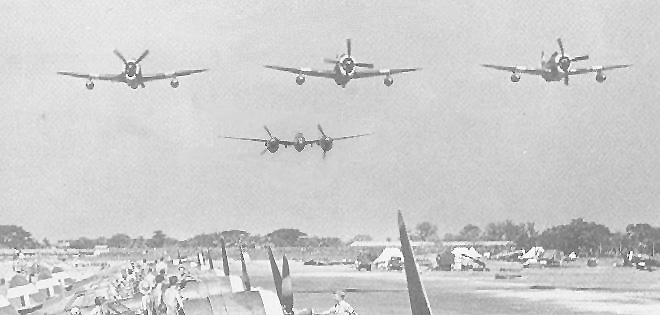
The advantages:
How many P-38 pilots, who, chasing an enemy fighter through a bomber
formation, owe their lives to the unique shape of their fighter. The fact
that virtually any gunner could readily identify the P-38 prevented many
a Lightning pilot from suffering the fate of more that a few P-51s.
Being peppered by .50 caliber slugs because you look too much like an enemy
fighter was always a fear. The P-38 drivers had the advantage of not looking
like anything flown by the Luftwaffe or the Japanese. Another advantage
of a distinctive shape was, since you were likely be to identified first, the
enemy may elect to look for an easier target and head off elsewhere.
That same standout aircraft has a far better chance of not being fired on by friendly
anti-aircraft batteries. Especially when flying low over front line combat areas.
The P-47 was an easy aircraft to identify, however, it was not unusual for
a novice pilot to call them out as Fw-190's or even A6M Zero's. Yet, in general,
this was more to do with the terror of those first combat missions, when
even seagulls looked dangerous.
Certainly the most unusual looking fighter flown by the Allied Air Forces was the P-38 Lightning. Powered by two Allison V-1710 V12 engines, it was a relatively large fighter measuring 52 feet in wing span and nearly 38 feet long. Nonetheless, Except in planform, it was not an easy fighter to spot nor to identify. In profile, the P-38 actually offers less square feet of area than the P-47. From directly ahead or behind, the Lightning presented its knife edge wing with three bumps (two engines and a central fuselage). Several of the surviving Japanese aces have written that spotting a P-38 head or tail-on was very hard. And as a general rule, most Japanese pilots tended to see the P-38 head-on as it bore in on them.
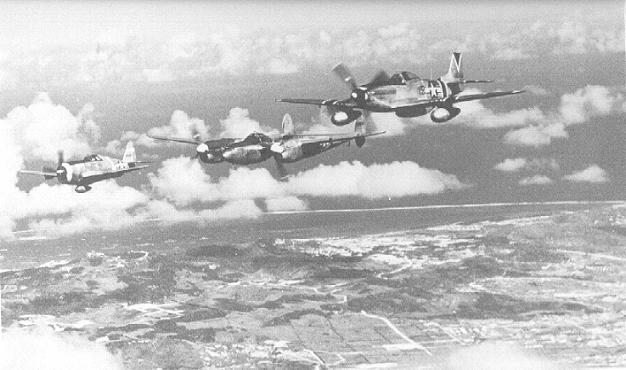
Hopefully,
after reading the text and studying the three view drawings and
photographs provided, you will see that as big as the P-38 was, it was
not necessarily the easiest to spot or identify when rushing at you (or escaping).
Nor should it be difficult to spot the advantages and disadvantages of
the big Lightning, which in general, tend to offset each other
sufficiently enough that its unusual shape and large size presented no
real disadvantage as compared to its Allied contemporaries.
